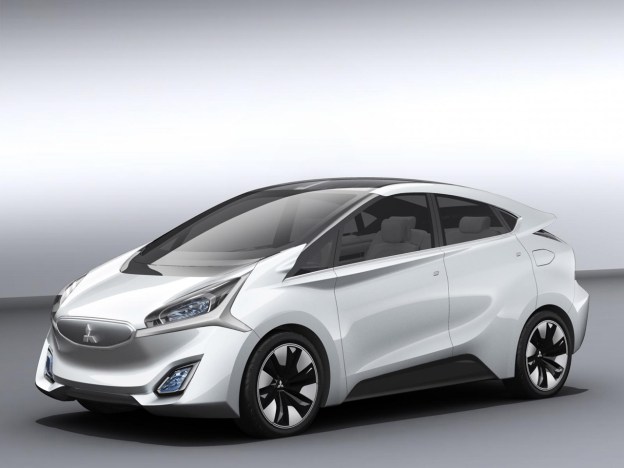 When Suzuki pulled out of the American car market, Mitsubishi starting looking like the next likely candidate for a death sentence. The Japanese carmaker has a small lineup of dated designs, flanked by the outstanding Lancer Evolution and the underwhelming i-MiEV. However, the 2013 Geneva Motor Show brought good new from Mitsubishi in the form of the CA-MiEV electric car concept.
When Suzuki pulled out of the American car market, Mitsubishi starting looking like the next likely candidate for a death sentence. The Japanese carmaker has a small lineup of dated designs, flanked by the outstanding Lancer Evolution and the underwhelming i-MiEV. However, the 2013 Geneva Motor Show brought good new from Mitsubishi in the form of the CA-MiEV electric car concept.
The “CA” stands for Compact and Advanced, which is fitting, because this concept is an advancement over the production i-MiEV. That car’s maximum range is 62 miles per charge, but the Geneva concept has a 186-mile range.
Mitsubishi calls the CA-MiEV a “suburban EV,” as opposed to the city-friendly i-MiEV. The company claims it has sufficient range for roughly one week of driving for the average European driver.
Giving the CA-MiEV that extra range is a 28-kWh lithium-ion battery pack (compared to the i-MiEV’s 16-kWh unit) and an 80-kW motor that is also an inverter and charge unit.
As in a Tesla Model S, the battery pack is completely flat and mounted under the floor. That should free up interior space in this compact EV, and Mitsubishi says it also leaves room for a plug-in hybrid’s range-extending internal combustion engine.
Tech features include remote starting and energy monitoring, and the ability to upload maps from a smartphone to the navigation system. The car can even send an emergency e-mail if it’s stolen or involved in an accident.

Mitsubishi says there are no plans to put the CA-MiEV into production, but some of its tech may show up in future plug-ins and EVs.
If Mitsubishi could get the CA-MiEV’s powertrain into a production car, and achieve its 186-mile range in the real world, it might have a winner on its hands. Such a car would eclipse all mainstream EVs, and even outlast the base Model S on a long drive. That would definitely ensure Mitsubishi’s future.


